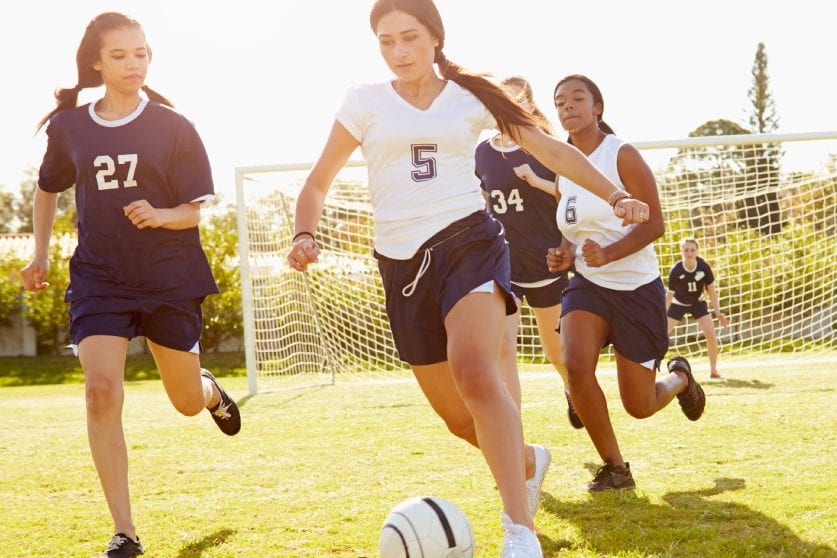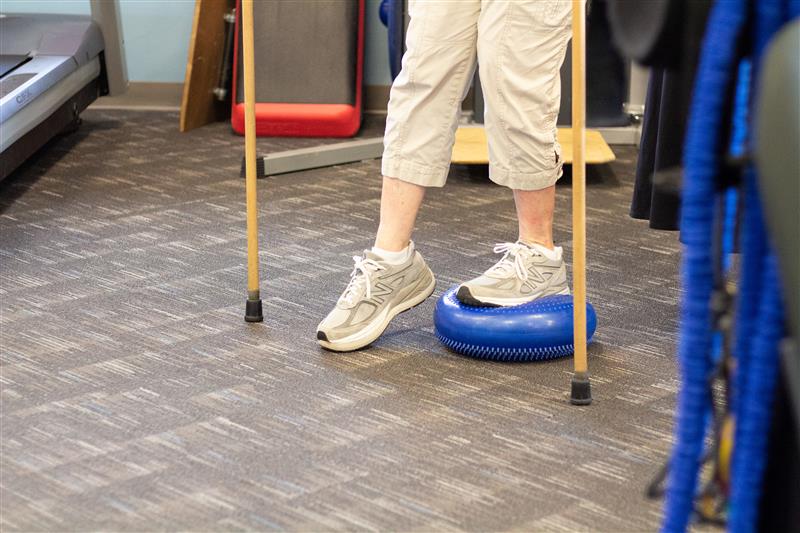Youth sports are a year-round activity for our children, and we are reminded of the consequences of participating in contact sports. It is well known that a concussion can occur in any sports-related activity and especially those that involve contact and collision. Being struck by another person or object is the leading cause of unintentional injury for teens and young adults ages 15 to 24, according to Injury Facts, and sports-related concussions are a significant contributor. An estimated 1.6 to 3.8 million athletes annually suffer concussions, according to the Brain Injury Research Institute. Often, cases are underreported and undiagnosed.
What Is a Concussion?
Let’s first review what a concussion is. According to the Centers for Disease Control and Prevention (CDC), Concussion is a mild form of traumatic brain injury (TBI). The International Symposium on Concussion in Sport and Zurich Guidelines defines Concussion “as a complex pathophysiological process affecting the brain, induced by traumatic biomechanical forces.” In short, it is a direct or indirect blow to the head, face, neck, or another part of the body causing forces to be transmitted to the brain. An example of a direct blow would be a head injury sustained from a fall. An Indirect blow example would be a whiplash injury sustained in a motor vehicle accident.
Concussions have reached a level of notoriety through the prevalence of head injuries in the NFL as well as mass media’s attention to traumatic brain injury/concussions. One doesn’t have to search too far to find sobering statistics surrounding head injuries. Dr. Edmonds reported in a December 2015 op-ed article on Concussions, that approximately 1.7 million traumatic brain injuries occur in the US each year and the lifetime costs for TBI range from $85,000 to $3 million. A 2013 CDC study found that US emergency departments treat an estimated 135,000 sports and recreation-related head trauma patients annually. The same study reported that greater than 50% of adolescent athletes will sustain a concussion by the time they graduate from high school. Because of statistics like this, it is essential that parents, coaches, players, and healthcare providers be diligent in recognizing and treating the signs and symptoms associated with traumatic brain injuries.
Why All the Attention to Contact Sports?
So you may be asking yourself if the majority of traumatic brain injuries, including concussions, are related to falls or indirect trauma such as whiplash, then why all the attention to contact sports? In a study published by Dr. Lovell in the Clinics of Sports Medicine in January 2009, the increasing concern of children 12-17 years old who sustained a concussion had their symptoms resolved in less than 15 minutes, yet they required 7 days for cognition to return to baseline. Dr. Field and colleagues found that high school athletes (females greater than males) have a more prolonged neurocognitive impairment than college or professional athletes. Because coaches, teammates, and/or parents may not recognize a cognitive change in an athlete within this short 15-minute window, 41% returned to play too early and possibly placed them at risk for further traumatic brain injury.
Common Symptoms
How do you recognize if someone has sustained a TBI? As a parent, coach, teammate, or health care provider, look for changes in three primary areas; cognition, physical function, and behavior. Traumatic Brain Injury symptoms in order of prevalence are headache, nausea, dizziness, blurred vision, sensitivity to light or noise, feeling groggy, problems with concentration, changes in sleep patterns, feeling tired, unsteadiness, and/or loss of consciousness. According to Makdissi, the most common symptom is headache (88%) followed by confusion, visual disturbances, amnesia, dizziness, and nausea. The above signs and symptoms may occur immediately or evolve over hours to days.
If a concussion is suspected in anyone, especially an individual 65 or older, seek immediate medical attention. For an athlete who is suspected of a concussion, remove the athlete from the field of play, assess the athlete, DO NOT return to play or practice the same day until evaluated by a health care provider and inform the athlete’s parents/ guardians. If in doubt, sit it out!
Concussion Recovery Time
How long does it take to recover from a concussion? Dr. Lovell and colleagues found that 80% will recover in 21 days. Please appreciate that recovery time is variable due to individuality and risk factors. The top 3 risk factors for a prolonged recovery in individuals who sustained a concussion are dizziness, mental decline, and headache at the time of injury. Other risk factors include a history of amnesia, female gender, migraines, geriatrics, and pediatrics. As mentioned above, traumatic brain injuries can evolve over time. This is why anyone who has sustained or is suspected of a TBI should be evaluated by a healthcare provider. There are a plethora of published concussion guidelines and best practices in the literature.
It is beyond the scope of this Blog to review them all. However, please appreciate that in the US, the trusted authority on head trauma including concussions is the American Academy of Neurology (a neurologist). Physical therapists and athletic trainers, who are trained in the management of TBIs (including concussions), are commonly found on the sidelines, in locker rooms, and in rehab clinics.
Best Practices in Concussion Management
In a perfect world, every individual should have a baseline neuromusculoskeletal assessment by their primary care provider. This is even more important for older individuals, infants/children, and high school-age athletes. For high school athletes, baseline testing, time of injury assessment, removal from play/practice, post-injury assessment by a qualified healthcare provider, and graduated step approach back to play are considered best practices in a Concussion Management Program. Physicians, physical therapists, and athletic trainers are health care providers who can perform baseline testing, time of injury assessment, and removal of an athlete from play or practice.
Post-injury assessments should be conducted by a physician or his/her designee, such as an orthopedic or sports physical therapist, within 48 to 72 hours. Emergency room staff are not the ones to approve whether an athlete can return to play. In many cases, a physician, physical therapist, or athletic trainer may not be positioned on the sideline or courtside to perform a time of injury assessment. This is why coaches and parents/guardians need to be aware of the signs and symptoms of a concussion.
Remember, head injury signs may present immediately or take hours to days to evolve. If you, a family member, and/or a friend have a history of falls, you should be evaluated by a physical therapist. If you’re interested in learning more about how ProActive Physical Therapy can help with fall prevention, contact us today. And remember, if you are concerned that a family member or friend has sustained a head injury, reach out to your primary care or emergency room department.



